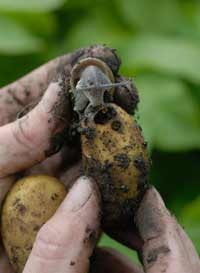Getting to grips with metaldehyde

Metaldehyde application needs to be carefully considered this autumn to ensure new maximum doses set by the Metaldehyde Stewardship Group are not exceeded.
The guidelines aim to reduce the amount of metaldehyde found in surface water and state that growers should apply no more than 700g of metaldehyde per calendar year and 250g per application, says independent agronomist, Colin Myram.
“If recommended rates are adhered to, total doses of metaldehyde applied can be bought down this year and that’s one step forward in reducing the overall levels of metaldehyde detected in surface waters.”
A good level of control can still be achieved using lower rates, says Mr Myram. “Most products can be used at lower doses than the label rate and there are some products with recommended rates as low as 3kg/ha, equivalent to 45g ai per application.”
But growers should consult their agronomist or supplier to ensure suitable products and rates are applied, he warns. Fine, firm seed-beds that restrict slug movement and promote rapid establishment will help enormously, but are not always easy to achieve, particularly later in the season he adds.
Jean-Francois Testut, of De Sangosse, agrees. “Most products are frequently used at lower doses than the recommended label rate and give good results.”
But the most important element when using lower ai levels is the quality of the bait, he says. “It needs to be both palatable and long-lasting, resisting breakdown from rainfall and pellet damage during spreading.”

